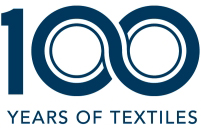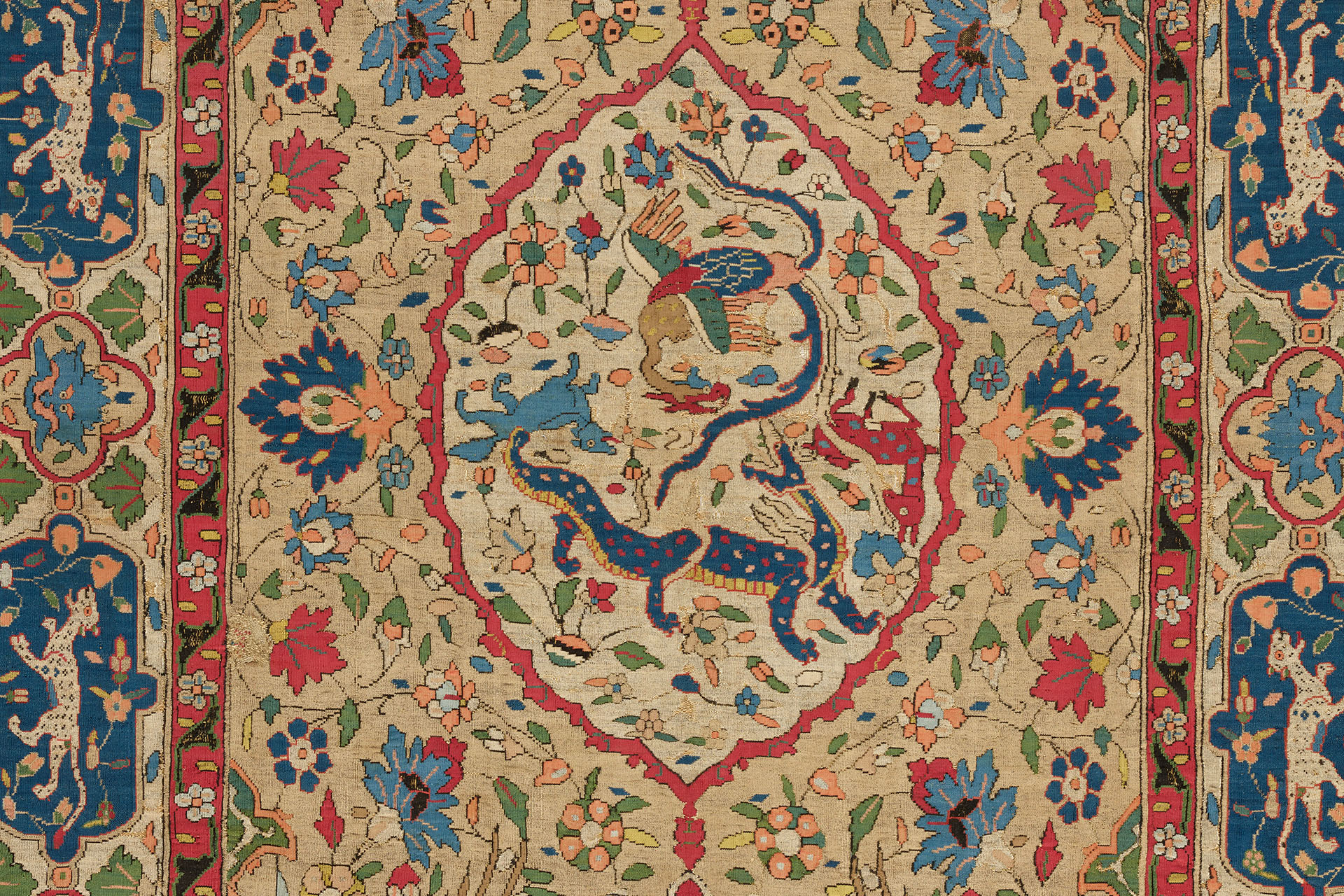MEDIA CONTACTS:
Julia Garbitt: julia [dot] metjian gwu [dot] edu (julia[dot]metjian[at]gwu[dot]edu), 617-921-4904
gwu [dot] edu (julia[dot]metjian[at]gwu[dot]edu), 617-921-4904
Chita Middleton: chita gwu [dot] edu (chita[at]gwu[dot]edu), 202-994-5593
gwu [dot] edu (chita[at]gwu[dot]edu), 202-994-5593
WASHINGTON (February 21, 2025)—Exquisite artworks created worldwide over the last two thousand years will be on view in "Intrinsic Beauty: Celebrating the Art of Textiles" at The George Washington University Museum and The Textile Museum, February 22 through June 14, 2025, as The Textile Museum—a leader in the study and appreciation of textiles—begins celebrations for its centennial year.
"Each of 60 spectacular works in this exhibition selected from our collections of more than 25,000 textiles exemplifies the 'intrinsic beauty of design, color, and technique' so prized by The Textile Museum's founder George Hewitt Myers," said John Wetenhall, director, The George Washington University Museum and The Textile Museum. "They set the stage for our next century as we expand our commitment to preserving artistic heritage, promoting sustainable textile practices, fostering cultural exchange and cultivating the next generation of textile enthusiasts, scholars and museum professionals."
The exhibition—a collaboration among museum curators Sumru Belger Krody, Lee Talbot and Shelley Burian—includes textiles rarely exhibited due to their size or fragility, such as the enormous Safavid carpet measuring approximately twenty-eight by eleven feet that may have decorated a Persian shrine. Other treasures include a fourth-century textile hanging from Egypt with an extraordinary three-dimensional design of a jeweled entryway into a garden; robes embroidered with metallic-wrapped threads for Daoist priests, considered some of the most visually splendid works of Chinese textile art; and a colorful tie-dye alpaca hair tunic (ca. 800-1000) from Peru's Wari culture woven to be taken apart and put together like a jigsaw puzzle.
The juxtaposition of textiles from different regions and time periods creates conversations that shed light on cross-cultural connections and the preeminent roles textiles have played in the social, political, religious, commercial and artistic life of many communities. The museum offers visitors a guide to explore four different pathways through the exhibition and discover intriguing stories of cultural and artistic exchange that led to innovative textile design:
Foundations of a Collection
Museum founder George Hewitt Myers (1875-1957) established The Textile Museum and its library in 1925 with a collection of some 350 rugs and other textiles, originally housed in two historic buildings in Washington, D.C.'s Kalorama neighborhood. By collecting multiple examples of textile or rug types, Myers created opportunities for comparative study in an emerging field of textile studies. Some groups that Myers emphasized—including Mamluk carpets,10th–12th century tiraz fragments, dragon carpets from the Caucasus, and early archaeological textiles from Peru—are represented in "Intrinsic Beauty."
Virtuosity in Textile Art
All the textiles displayed in the "Intrinsic Beauty" exhibition are evidence of masterful artistry, and several seen here are among the best examples of their kind. They include a Buddhist priest’s mantle; a section of a Turkish embroidered cover from the Ottoman empire; and a delicate piña blouse from 19th-century Philippines.
Artists Perspectives
To broaden interpretive perspective, the museum invited living artists to reflect on the quality and craftsmanship they see revealed in works as varied as a chief's tunic or cape from the Democratic Republic of Congo or Angola, possibly 19th century; and a 14th-15th century curtain fragment that once hung in the Alhambra Palace in Spain. Visitors will find artists' commentary in labels beside selected artworks.
An Interwoven World
When cultures collide, evidence of artistic exchange can be seen in the textile arts, such as a hanging showing the “Pelican in Her Piety” from 17th-century Spanish Colonial Peru and a 16th-17th century ecclesiastical garment with fabrics from Türkiye's Ottoman empire and Iran's Safavid empire.
Centennial Collections Book - "Textile Treasures"
In honor of The Textile Museum’s centennial, the museum is releasing “Textile Treasures,” the first major publication to bring together global masterworks from The Textile Museum Collection, including artworks on display in "Intrinsic Beauty." Produced in collaboration with Hali Publications, it features stunning photography along with research from curators Sumru Belger Krody, Lee Talbot and Shelley Burian, as well as contributors Carol M. Bier, Walter B. Denny, Barbara G. and David W. Fraser, Mariachiara Gasparini, Mattiebelle Gittinger, Louise W. Mackie, Ann Pollard Rowe and Rebecca A. T. Stevens.
Enduring Traditions
A second centennial exhibition, "Enduring Traditions: Celebrating the World of Textiles," will explore the cultural significance of treasures from the collection and reveals traditions and values of communities across continents. It will be on view August 16 through December 20, 2025.
Special Public and Member Programs
Guided tours, as well as public programs, explore themes from the "Intrinsic Beauty" exhibition. They include Family Day: Kimonos, Capes and Other Art to Wear on Saturday, March 29, 11 a.m.-3 p.m., which is a free event that is part of the National Cherry Blossom Festival. Activities include designing your own cape, making a cherry blossom accessory, trying on traditional Japanese garments, and joining a gallery tour.
For in-person gallery tours led by experienced docents for a group of up to 20 people, submit an online request at least three weeks in advance.
Scheduled member tours are also offered. If you are not currently a member, you can join or renew online.
Exhibition and Related Centennial Program Support
Lead support for activities celebrating the museum’s centennial is provided by an anonymous donor, the E. Rhodes and Leona B. Carpenter Foundation, and the Estate of Peter L. Sheldon. Major support is provided by the Bruce P. and Olive W. Baganz Fund for The Textile Museum Exhibitions and Publications, the Cynthia and Alton Boyer Fund for Education, the Judith B. Grunberg Estate, Helen K. King, the Markarian Foundation, and Mary Jo Otsea & Richard H. Brown.
Visiting Information
The George Washington University Museum and The Textile Museum is located on GW’s Foggy Bottom campus at 701 21st Street, NW, in Washington, D.C., just blocks from the Smithsonian Renwick Gallery, White House, Kennedy Center and the National Mall. Galleries are open to the public Tuesday through Saturday, 10 a.m. to 5 p.m., closed on university holidays. Admission to the museum is free. For the most up-to-date information on the museum's visiting hours, exhibitions and educational programs, please check the museum website.
-GW-



